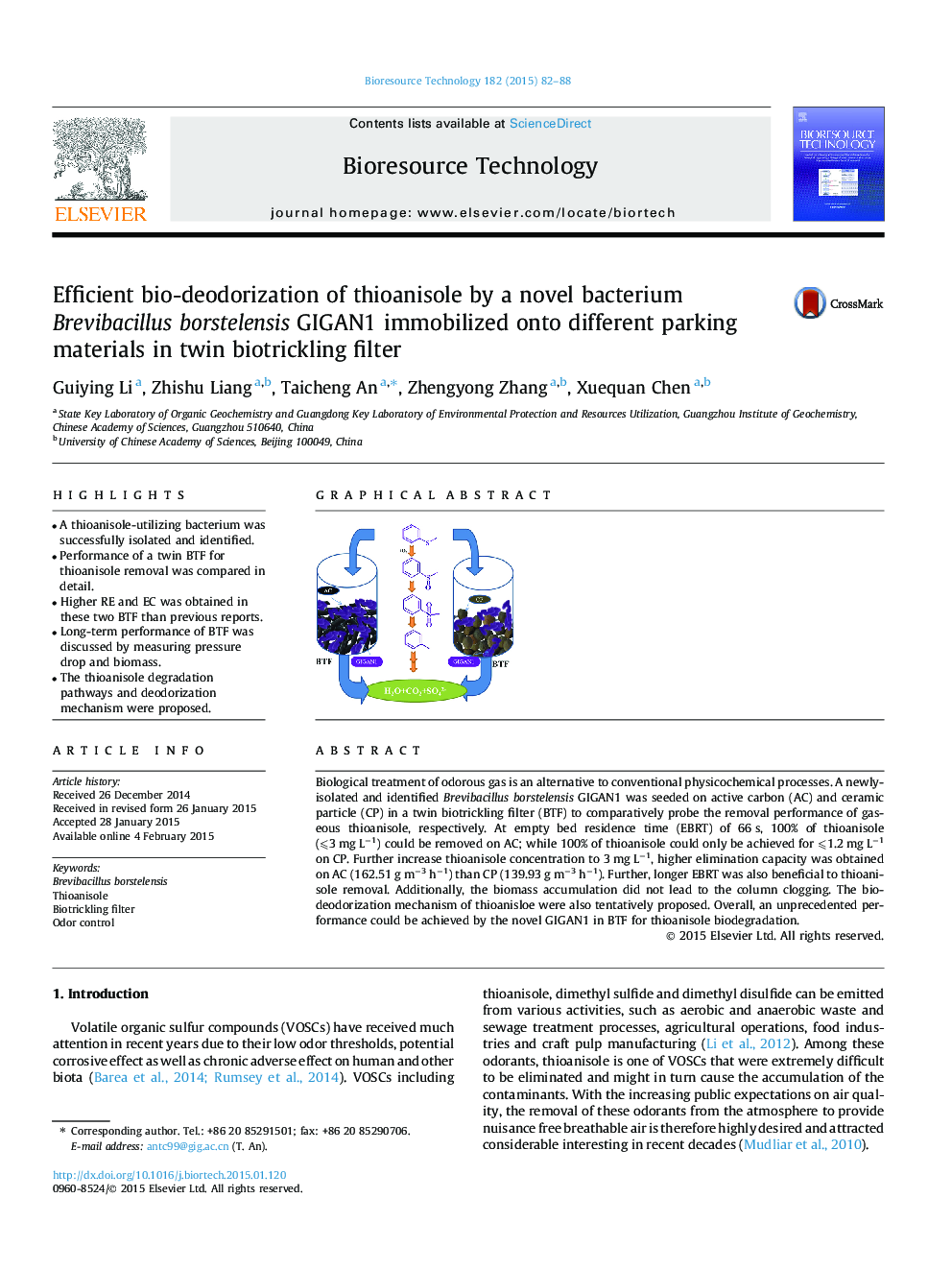| Article ID | Journal | Published Year | Pages | File Type |
|---|---|---|---|---|
| 679981 | Bioresource Technology | 2015 | 7 Pages |
•A thioanisole-utilizing bacterium was successfully isolated and identified.•Performance of a twin BTF for thioanisole removal was compared in detail.•Higher RE and EC was obtained in these two BTF than previous reports.•Long-term performance of BTF was discussed by measuring pressure drop and biomass.•The thioanisole degradation pathways and deodorization mechanism were proposed.
Biological treatment of odorous gas is an alternative to conventional physicochemical processes. A newly-isolated and identified Brevibacillus borstelensis GIGAN1 was seeded on active carbon (AC) and ceramic particle (CP) in a twin biotrickling filter (BTF) to comparatively probe the removal performance of gaseous thioanisole, respectively. At empty bed residence time (EBRT) of 66 s, 100% of thioanisole (⩽3 mg L−1) could be removed on AC; while 100% of thioanisole could only be achieved for ⩽1.2 mg L−1 on CP. Further increase thioanisole concentration to 3 mg L−1, higher elimination capacity was obtained on AC (162.51 g m−3 h−1) than CP (139.93 g m−3 h−1). Further, longer EBRT was also beneficial to thioanisole removal. Additionally, the biomass accumulation did not lead to the column clogging. The bio-deodorization mechanism of thioanisloe were also tentatively proposed. Overall, an unprecedented performance could be achieved by the novel GIGAN1 in BTF for thioanisole biodegradation.
Graphical abstractFigure optionsDownload full-size imageDownload as PowerPoint slide
